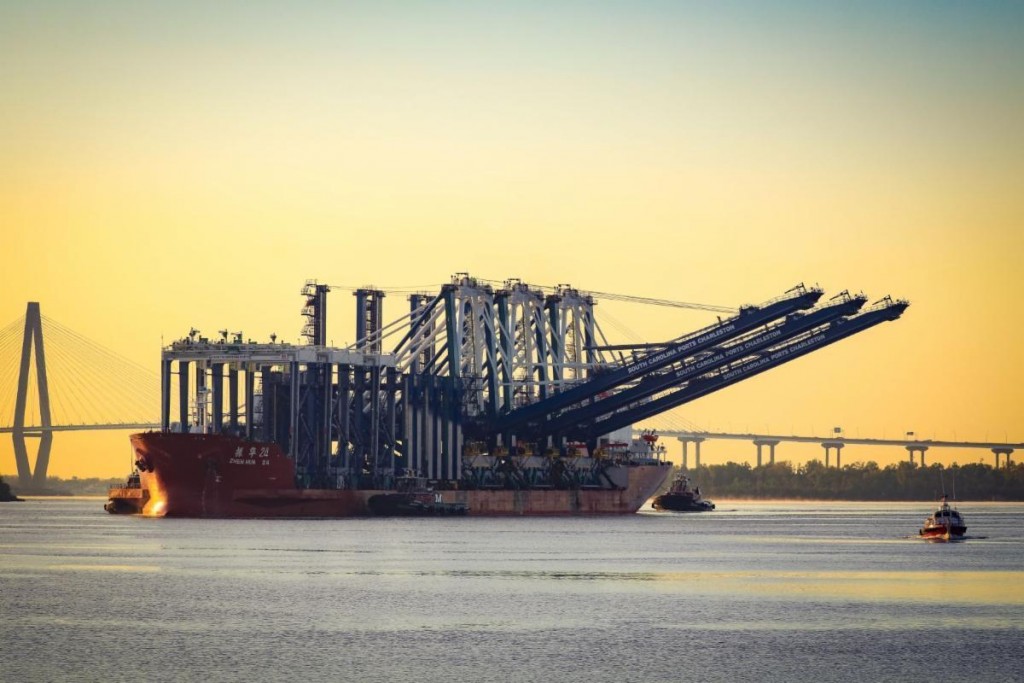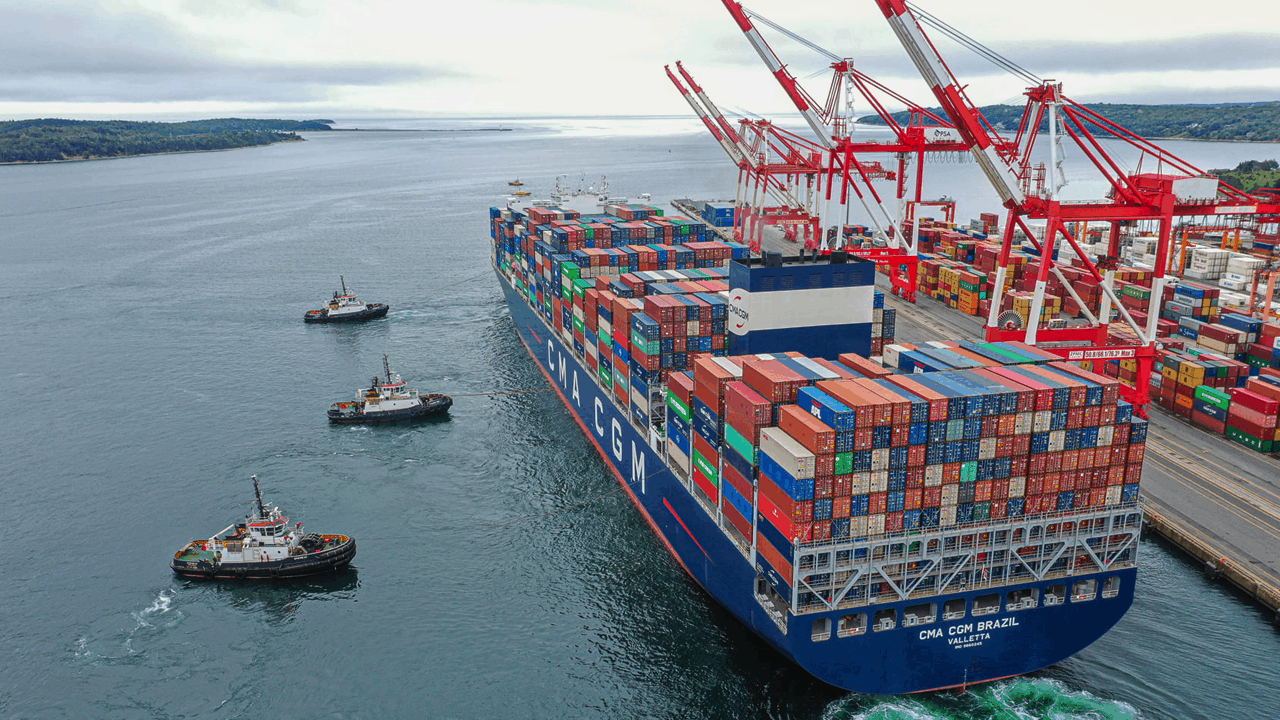The Second Wave
As the second wave (or third wave by some measures) of the Covid-19 pandemic sweeps through Europe and the Americas, there is once again uncertainty as to the pandemic’s long-term economic impacts.
For the global terminal operators, the pandemics most immediate impact was the rapid withdrawal of containership services – blank sailings. The reduction in boxship calls was further complicated by the health risks to stevedores handling the ships as how to keep personnel safe became a paramount objective for operators.
Blank sailing announcements soared for weeks six through eight of 2020 [Feb. 3-23] hitting 121 [a combination of Chinese New Year, the pandemic and IMO regulations] boxship layups piled up and by late May hitting 2.70 million TEUs or 11.6% of the world fleet – a number even larger than during the shipping plunge accompanying the 2009 Great Recession.
But that all changed in a blink of an eye. By June the blank sailing announcements were down to 2 a week and by October the inactive fleet had dropped to only 430,000 TEUs. In recent months, we’ve seen demand move from a trickle to a torrent, as container rates have soared [Drewry’s WCI container index rose from $1,200 per 40-foot container on Oct 12, 2019 to over $2,600 in Sept. 2020] and port congestion and cargo delays have increased. Will this flood of boxes continue? We don’t know but even with socio-economic instability of the accompanying pandemic, there are some reoccurring trends for terminal operators. And these trends will shape both the near and long-term future for container terminal operations.
Even prior to the pandemic, box terminal operators were wrestling with a confusing host of issues. Peter Voser, Group Chairman for Singapore-based PSA International, the world’s largest box terminal operator, in the 2019 annual report, summed up the situation facing the entire industry, writing: “2019 was a challenging year characterized by trade protectionism and socio-political unrests. While the global economy has doggedly weathered a slowdown in trade, its resilience began to wane as strained relationships between major trading nations exacerbated into open tariff wars. The shipping industry had to grapple not only with existential and operational issues brought about by anemic cargo flow, but also the high costs, strategic decisions and tactical maneuvers necessary to comply with the International Maritime Organization (IMO) 2020 global Sulphur regulation that went into effect on 1 January 2020.”

Growth Spurt?
One of the side-effects of the pandemic is worldwide acceleration of digitalization of commerce. For terminal operators, the digitalization of freight movement works hand-in-hand with the efforts to more fully automate terminal operations. And the automated terminal, integrating autonomous yard handling equipment matched to digital execution and communication with the parties throughout the supply chain, is the elusive “holy grail” for TOs. But the goal of a joystick computer game-like terminal ops located far from the quay, may be farther off than most port pundits believe. Not because of technological obstacles rather because containerization still has a lot of growing to do and terminal automation could prove elusive.
In a February 2019 investor’s presentation Cargotec, one of the world’s largest suppliers of terminal equipment and software [of which Kalmar and Navis are notable subsidiaries], pointed out, “only 40 terminals (1,200 terminals) are automated or semi-automated globally.”
And while the containerized movement of freight is well over a half century old and normally considered a mature industry, the “penetration” of containerization still remains very low.
According to Drewry’s (in a DP World investors’ report) the global average TEU per thousand people (TEU/000) is 104, with countries like the UK and China being on the high side, 168 and 165 respectively, while on the low side the nations of Latin America notched 93, Africa at 22 and India just 13. These penetration numbers point to a sizeable gap between the container haves and container have nots. From a TO perspective that means there are many regions that remain inadequately covered and thus have high growth potential – some analysts saying the TO market could grow by $4.64 billion over the next four years alone. But much of this potential lies in regions where it will be difficult to construct and manage new terminals. Regions often lacking both economic structure to attract investment and to develop the necessary supporting infrastructure (roads, rail and IT) for building terminals.

20,000 reasons
Another issue facing terminal operators is the increasing size of container ships. With linehaul containerships now regularly topping 20,000 TEUs, terminal operators need to move more boxes faster through the terminal than ever before. For example, take Maersk, [2019 annual report] the carrier’s owned [not chartered in] container fleet amounted to 2,208,762 TEUs capacity with a staggering 885,330 TEUs allocated to vessels over 15,000 TEUs, or about 40% of the fleet’s total TEU volume. To look at the impact another way, of 507 vessels in the fleet 32.6% (50 ships) account for just over 40% of the total capacity and the share for the larger ships 17,000 TEUs and up is rising faster than other smaller vessel classes further tilting the scales towards larger boxships in the near future.
Will the building of ever large containerships continue? While the short-term analysis seems to suggest at least another generation of ships of 20,000 TEU will slip down the ways, some studies say this generation of ships might be the last mega-containerships.
In Deloitte’s Global Port Trends 2030 (released in April) noted, “The race for economy of scale vessels seems to have come to an end. Large-scale ship building projects are therefore unlikely to continue.”
Still before giant containerships go the way of the megalodon, terminals will still need to address the considerable concerns of moving boxes rapidly off the mega-boxships or risk becoming choke points (or chokeports) in the cargo stream.
It seems wherever you look, new gantry cranes and other equipment are being delivered, whether it is the Port of Virginia, Charleston, Los Angeles, Long Beach or terminals in Asia, Europe or the Middle East.
There’s a reason for the rush of new equipment. A tandem lift gantry crane is an expensive but doable solution to container handling the larger volumes brought by larger ships. But exotic engineering isn’t necessarily enough to address issues both inside and outside the terminal gates.
The situation is further exacerbated by the construct of the ocean carrier services themselves. There are now fewer major carriers carrying more boxes then every before. And further complicating container flows is the fact that most of the carriers operate within one of three major carrier alliances [2M, THE Alliance, and Ocean Alliance] – thus the loss or addition of an alliance “call” can drastically alter a terminal’s volumes up or down. Added to this mix is the fact that in many circumstances the container flow is heavily weighted in one direction – for example Asia to the US West Coast – complicating the return of containers. With terminal land at a premium, moving freight at velocity can be compromised by a flood of empties being repositioned.
For example, as Thomas Eckelmann, chairman of the management board of Hamburg-based Eurokai (parent company for Eurogate) offered an illustrative explanation of the impact terminal shifts in the company’s 2019 annual report writing, “The three container terminals in Bremerhaven closed the year with clear volume losses of -10.9% to 4.871 million TEUs (2018: 5.467 million TEUs). The transfer of four transatlantic services operated by THE Alliance to HHLA Container Terminal Altenwerder in Hamburg delivered a bitter blow to EUROGATE Container Terminal Bremerhaven, leading to a volume loss of 58.6% compared with 2018.”
Fortuitously for Eurokai, they were also the recipient of the good fortune as volumes increased at EUROGATE Container Terminal Hamburg hitting over 2 million TEUs of throughput in 2019, nearly 28% higher than in 2018 – as the terminal operator won a contract with OCEAN Alliance Europe-Far East service operated by CMA CGM. Still for most TOs (and ports) the loss of a carrier alliance contract is devastating to the bottom line. And while the global TOs may be able to offset the loss in one part of the world with the addition of an ocean carrier alliance (possibly even the very same carrier alliance) somewhere else in the portfolio, to the port the lost call isn’t so easily balanced out. To this point there is certain reticence among many larger ports (and port authorities) of placing all their bets on one TO.
The Many Shades of Green
There is also the challenge for terminals to become “greener” operators – particularly in urban port areas like Los Angeles and Long Beach. The initial IMO strategy mentioned above by the PSA’s Peter Voser aims to reduce CO2 emissions from shipping by at least 40% by 2030, with a goal of moving towards 70% by 2050, and to reduce GHG (Greenhouse Gas Emissions) emissions by at least 50% by 2050 compared to the base year of 2008.
How the ocean carriers and the terminals will accomplish this is still very much a work in progress.
From an ocean carrier perspective, the number of scrubber fitted container ships has increased to 652 at end of October with only 9 more ongoing retrofits, according to Alphaliner. This means that 395 scrubber-fitted container ships have been added since the beginning of the year. However, long-term scrubbers won’t solve the carbon problem and the search for alternative vessel fuels like LNG (11 operational boxships) or potentially hydrogen is well underway.
These carrier initiatives are just part of the dynamic of how vessels will have to conform to regulations in port waters (some ports have already instituted incentive programs for using higher fuels with less GHG emissions) and ship-to-shore connections, and to which TOs also must adhere.
Regional, national and local environmental regimes are also reshaping the supply chain. How much influence the new regulatory matrix will have on vessel routings is a very open question at this moment in time. To some degree, carriers do have the luxury of moving assets (ships) to fit circumstance – this year’s blank sailings and layups are a good example of the flexibility.
But for TOs the issue is more complex. Going green for TOs involves everything from equipment deployed to the actual terminals use of space – for example adding greenways. There are also the big-ticket items, the acquisition of new eco-friendly (often electric) yard equipment ranging from massive tracked gantry cranes and RTGs (Rubber Tire Gantry Cranes) to forklifts. And these expensive pieces of kit besides being eco-friendly must blend into the overall efficiencies of the terminal. Additionally, some TOs have added in solar, wind and other alternative power to their own mix (even their own micro-grids) as well as their green power purchases to help make their operations greener.






